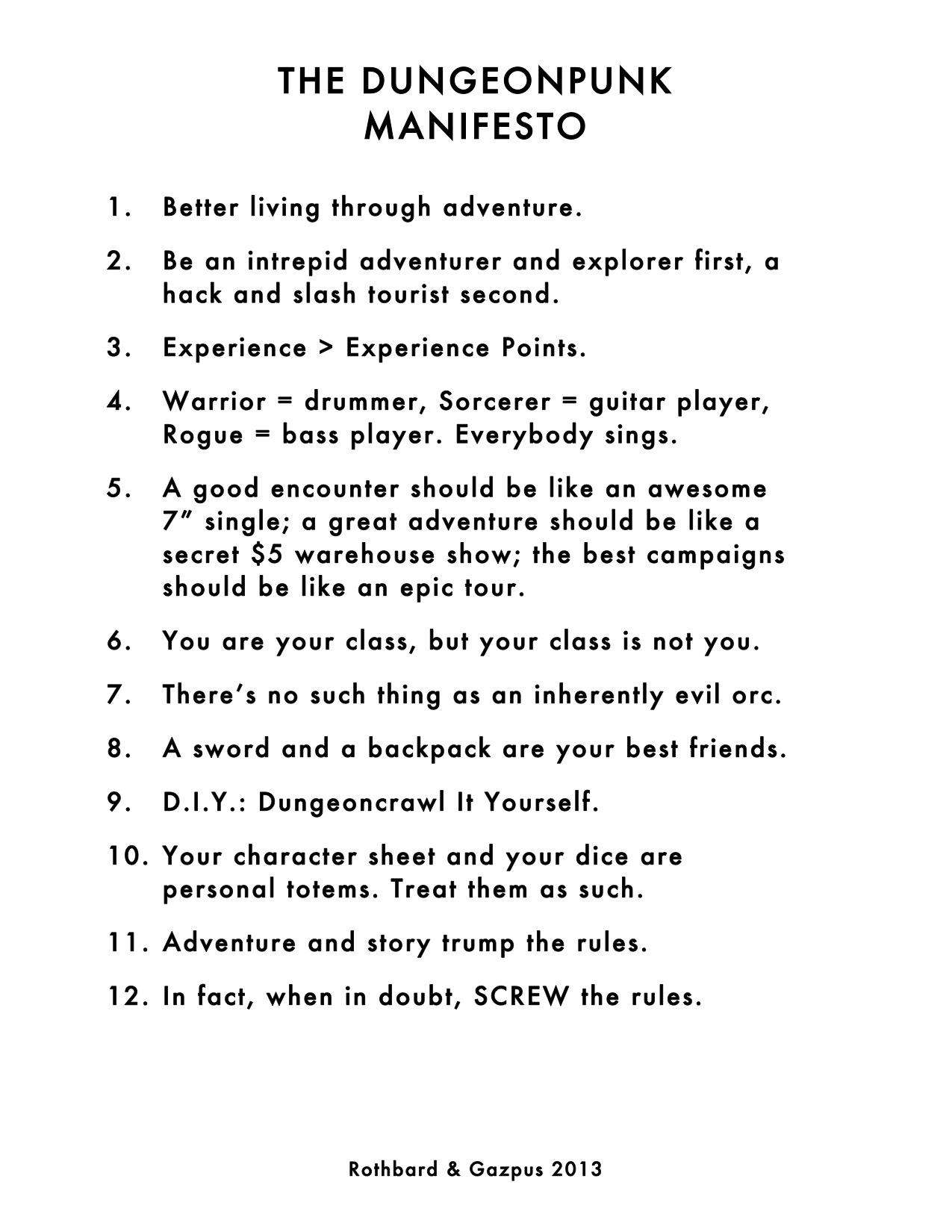I know, I know, everything needs to be punk these days. But if you google "Dungeonpunk" and look at the pictures, it's more of a fashion statement, really. "You have to look like this or that to be punk!" always was a stupid statement to begin with. And even those stating something down the line of "Punk was the result of a music movement in the mid 70's..." are wrong. It was a state of mind expressed in a music movement in the mid 70's. That's a huge difference. The Mighty Google also provided this post over at tv tropes for further reading about Punk Punk. They are a bit post modern ironic about the whole thing.
So mainstream blurred the line and made punk socially presentable. There is a joke hidden in there somewhere, I'm sure of it.
To be clear about this, I'm not a punk, but I think words and definitions are important to establish some grounds for having a meaningful and conclusive dialogue. And I didn't feel especially ranty about the subject today, but then I saw this:
 |
| I found it here. |
I'm sorry, but this is as much "punk" as kittens playing with a sock. I won't comment it any more. I'm sure they meant no harm. What I will do, though, is proposing an alternative. Something more in the spirit of what anything "punk" could really mean. A Counter-Manifesto.
A World of DungeonPunk
Live is cheap in the world of DungeonPunk. Corrupting humanity was easy enough, now the Monsters are in charge. Not that they changed that much, but they take what they want. And so should you, punk. The world lies in ruins and is yours to take. A club is cheap enough, take one and go for the dungeons. Killing is easy enough, you see that every day on the streets of the slums you call your home. Take your friends. Who else is going to cover your back? If the authorities are coming for you, let them feel your anger. If you're lucky, they'll fear you someday in the future. If you live that long. Now go and loot. Gold can buy you a new arm, a magical sword even or a shiny new armor, but finally it will buy you freedom. And always remember: a Cleric will stitch you together every time, but a Mage will make you better.
The DungeonPunk Counter-Manifesto
- If it's in a Dungeon and needs your help, it's a trap.
- Use the environment. That's what it's there for.
- Them fearing you is half the battle. You'd better look the part, punk.
- The Rules are your friend, as is the weapon of your choice. Never forget that.
- The Dungeon Master isn't your friend. And shouldn't be.
- If you can't beat it alone, cooperate with the pack. Nothing's changing? Flee.
- It's not called an adventure, it's called a sandbox. The sandbox is not your friend.
- Everything comes with a price. If the price is right, do it.
- Trust the thief to do his job. It will also mean he's stealing from you. If you are the thief, deny that.
- Trust the fighter to do his job. If you're the fighter: do your job!
- Be nice to the magic-user, he might get powerful (if he lives). If you're the magic-user, write down their names now, misdirect fire balls later.
- Believe! If you're the cleric: make them.
- Remember: demi-humans might not have a soul.
- Your life being cheap doesn't mean they shouldn't pay.
- And it's all right, if you can get away with it.
- You owe no one.
- Use your brain.
If you have any more of those, please post them in the comments. I will make a pretty sheet with all the entries in the near future...






